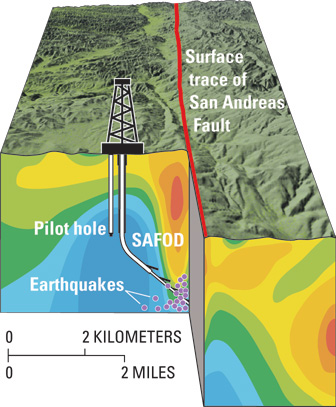UNDERSTANDING
THE PHYSICS OF EARTHQUAKES


|
UNDERSTANDING
THE PHYSICS OF EARTHQUAKES
|
|
 |
 |
| U.S. Geological Survey (USGS) rock-mechanics laboratories have been the birthplace of a stream of breakthroughs on the nature of rock friction and its control of earthquakes—their size, rate, interactions, and the ground shaking they produce. These studies, in combination with extensive field tests, have led to new theories about the physics of faulting and the role of fluids in quake generation. USGS is now poised to directly test these theories not just on laboratory scale models (left) but also at a depth of 2.5 miles in the San Andreas Fault (right) at Parkfield, California. There, the San Andreas Fault Observatory at Depth (SAFOD) is being built in partnership with the National Science Foundation (NSF) as part of the EarthScope program. The 1.3-mile-deep SAFOD pilot hole was successfully completed in 2002. | |